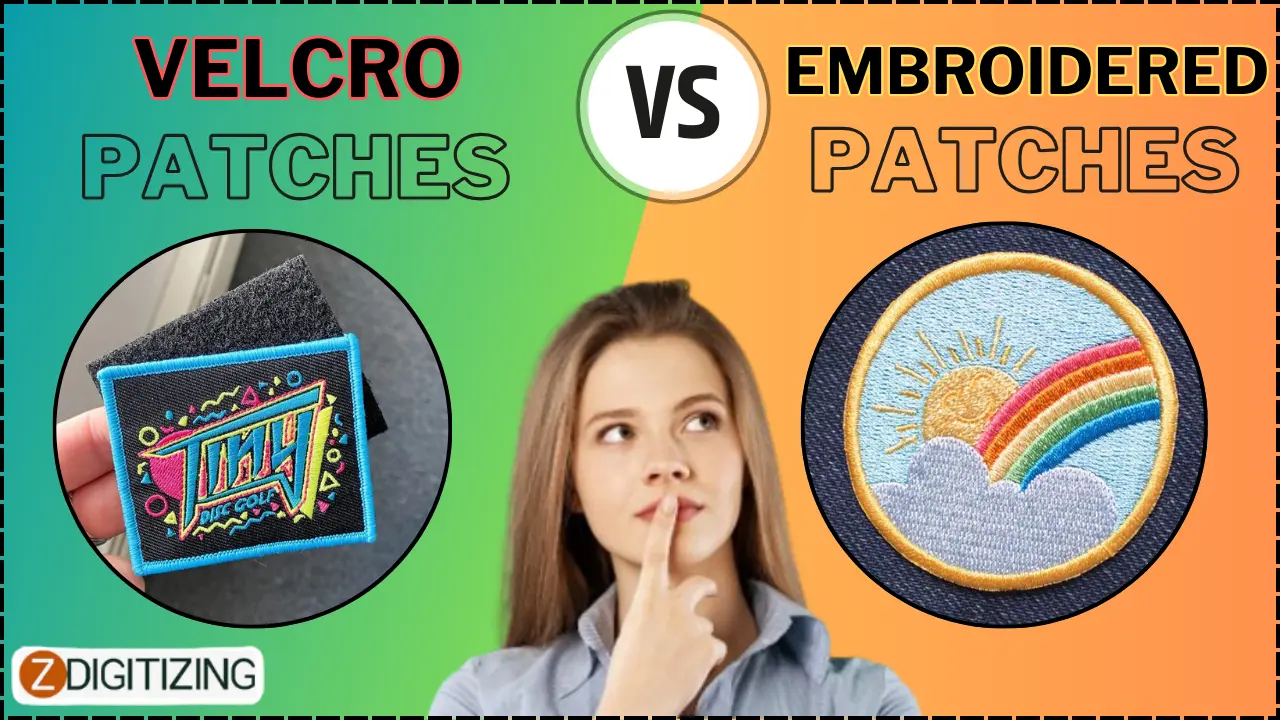When it comes to choosing patches for various purposes, whether it's for military uniforms, sports teams, or corporate branding, the debate between Velcro patches and embroidered patches often arises. Both options have their own set of advantages and considerations, making the decision a matter of specific needs and preferences. In this article, we'll delve into the characteristics of Velcro patches and embroidered patches, highlighting their differences and discussing which one might be better suited for different applications.
Velcro Patches
Velcro patches, also known as hook and loop patches, offer a convenient and versatile option for attaching patches to garments, bags, and other surfaces. These patches consist of two components: the hook side and the loop side. The hook side features tiny hooks that interlock with the loops on the loop side, creating a strong and secure attachment.
Advantages of Velcro Patches:
-
Interchangeability: One of the biggest advantages of Velcro patches is their interchangeability. They can be easily removed and replaced, allowing for quick customization and versatility.
-
Ease of Application: Velcro patches can be attached to a variety of surfaces without the need for sewing or special tools. This makes them ideal for temporary or frequently changing applications.
-
Reusable: Velcro patches can be used multiple times without losing their adhesive properties, making them a cost-effective option in the long run.
-
Customization: Velcro patches can be customized with different designs, colors, and sizes, offering endless possibilities for personalization.
Embroidered Patches
Embroidered patches are crafted using intricate stitching techniques to create detailed designs on fabric. These patches are durable, elegant, and timeless, making them a popular choice for a wide range of applications.
Advantages of Embroidered Patches:
-
Durability: Embroidered patches are known for their durability and longevity. The stitching is tightly woven, ensuring that the patch withstands wear and tear over time.
-
Professional Appearance: Embroidered patches have a polished and professional appearance, making them suitable for uniforms, corporate branding, and other formal applications.
-
High-Quality Detail: The stitching process allows for intricate detailing and shading, resulting in high-quality patches that capture even the most intricate designs.
-
Permanence: Once attached, embroidered patches are typically permanent and not meant to be removed or replaced frequently. This ensures that the patch remains securely in place for the long term.
Which One Is Better?
The choice between Velcro patches and embroidered patches ultimately depends on the specific requirements of the application.
-
For applications requiring versatility, frequent customization, and ease of attachment, Velcro patches may be the preferred option.
-
For applications where durability, professionalism, and a polished appearance are paramount, embroidered patches are likely the better choice.
Conclusion
Both Velcro patches and embroidered patches offer unique advantages and considerations. Understanding the specific needs of the application is key to determining which option is better suited for the task at hand. Whether it's the convenience of Velcro patches or the timeless elegance of embroidered patches, there is a patch solution to fit every need.
FAQs (Frequently Asked Questions)
-
Can I use both Velcro patches and embroidered patches for the same application?
- Yes, you can use both types of patches for the same application, depending on your specific needs. For example, you might use Velcro patches for temporary or interchangeable designs and embroidered patches for more permanent or formal applications.
-
Do I need embroidery digitizing services for both Velcro and embroidered patches?
- Yes, embroidery digitizing services are essential for both Velcro and embroidered patches. These services convert artwork into digital embroidery files that can be used to create the patches with precision and accuracy.
-
How long does it take to convert artwork into an embroidery file?
- The time it takes to convert artwork into an embroidery file depends on various factors, including the complexity of the design and the expertise of the digitizer. Typically, it can take anywhere from a few hours to a few days.
-
Can I provide my own artwork for embroidery digitizing services?
- Yes, you can provide your own artwork for embroidery digitizing service. However, it's essential to ensure that the artwork is of high quality and suitable for conversion into an embroidery file.
-
Are there any limitations to the size or complexity of designs for embroidery digitizing services?
- While most designs can be digitized for embroidery, there may be limitations on extremely small or intricate designs. It's best to consult with the digitizing service provider to determine the feasibility of your design.


